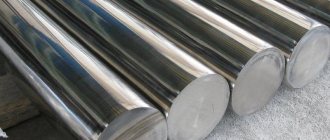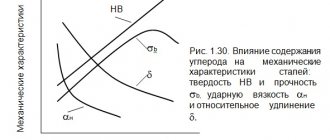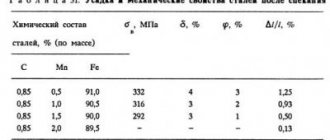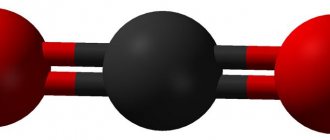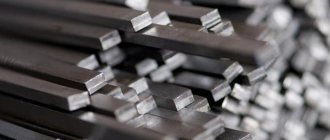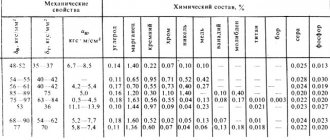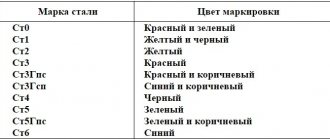Carbon steel, due to its affordable cost and high strength characteristics, is one of the most widely used alloys. From such steels, consisting of iron and carbon and a minimum of other impurities, various engineering products, parts of stakes and pipelines, and tools are made. These alloys are also widely used in the construction industry.
Carbon steel calibrated wheel is most often used in shipbuilding and mechanical engineering
Change in structure upon addition of carbon
Indicators of strength and ductility depend on the structure and its changes with increasing carbon content.
At a proportion of up to 0.2%, ferrite and tertiary cementite are formed; a further increase leads to the formation of eutectoid ferrite and cementite (pearlite). The perlite index value gradually increases and at 0.8% carbon only perlite is contained. If the content is more than 0.8%, needles of secondary cementite and perlite appear.
The formation of cementite occurs up to 2% carbon, while the strength decreases due to the fragility of the cementite network along the boundaries of pearlite grains. When this value is exceeded, a eutectic mixture is formed.
The essence of the steel improvement process
After hardening of steel, martensite structures predominate in it. High tempering of steel consists of heating at least 20-40°C below the Ac1 point (see Iron-carbon diagram), but not lower than 500°C, holding and controlled cooling of the part.
Improvement of steels on the iron-carbon diagram
At the second stage of steel improvement - the process of high tempering of steel - diffusion decomposition of martensite occurs until the formation of tempered sorbitol (see Elements of the theory of heat treatment). Dispensed sorbitol has a homogeneous and dispersed structure.
New properties and advantages of the alloy
Carbon in steel gives it additional advantages, primarily:
- sufficient hardness of the surface layer and relative softness of the inner layer;
- good machinability;
- durability;
- affordable price.
With an increase in the proportion of carbon, hardness and strength increase and ductility decreases, therefore, the more carbon there is, the more difficult the cutting process, and the worse the deformation and welding performance. Based on this, the following types of steel are distinguished:
- Low carbon, with a share of less than 0.25%. They are quite plastic, easy to deform and process.
- Medium carbon, with a share of 0.3-0.6%. This type is also plastic and has an average strength rating.
- High carbon, with a share of 0.6-2%. With low viscosity and high strength. Welding is carried out only with preheating to 225 degrees.
In addition to the basic mechanical properties, an increase in carbon content increases the cold brittleness threshold.
Other classification parameters
Classification of carbon steels is possible according to the level of purification from harmful impurities. The following groups of alloys are distinguished:
- ordinary quality (B);
- qualitative (B);
- increased quality (A).
Category B includes steels that meet certain mechanical characteristics. They are more affordable and are not subject to pressure or heat treatment. Certificates of categories A and B can be subjected to various deformations, and for them the manufacturer prescribes the composition and all the properties.
There is a classification according to the scope of application:
- structural – used for the manufacture of products for various purposes;
- instrumental - used for the manufacture of various tools.
In the marking of carbon steel, the designations “sp”, “ps” and “kp” are found. They indicate the degree of its oxidation and are another classification of alloys:
- “sp” – quiet alloys containing up to 0.12% silicon, characterized by impact strength, uniform texture and chemical composition; the main disadvantage is the lower quality surface of the products;
- “ps” – semi-quiet alloys with a silicon content of 0.07–0.12%, which are characterized by a uniform distribution of impurities;
- “kp” – boiling carbon steels with a silicon content of less than 0.07%, which are characterized by a heterogeneous structure.
Advantages of boiling steels:
- affordable cost (due to low additive content);
- high plasticity;
- good machinability and flexibility in processing by plastic deformation.
Application of carbon steel
Applications depend on the mechanical properties, and therefore on how much carbon there is in the steel. With an index of 0.7-1.3%, carbon steel is used for the manufacture of cutting and impact tools. They are marked with the letter “U”, the subsequent number characterizes the share, for example, U13. The higher the indicator, the greater the influence of carbon on the mechanical properties of steel.
Low-carbon steels are divided into subgroups depending on their purpose:
- Low carbon: 05, 08, 10. Due to their plasticity, they are used in cold stamping for the manufacture of washers, gaskets, casings and other parts.
- Low-carbon: 15, 20, 25. This value of carbon in the steel composition gives increased hardness and sufficient toughness; they are used for the manufacture of small-sized parts (cams, pushers, lightly loaded gears).
- Medium carbon: 30, 35, 40, 45, 50, 55. Used for the manufacture of crankshafts of low-speed engines, gears, flywheels - parts whose performance is determined by fatigue resistance. They are used after normalization and surface hardening, which increase viscosity and ductility, and accordingly, the machinability index improves.
- High carbon: 60, 65, 70, 75, 80, 85. Used for the manufacture of springs, eccentrics and springs. They are pre-hardened and moderately tempered, which improves the elastic properties necessary for manufactured parts.
- Boiler rooms: 12K-22K. Used for the manufacture of equipment operated at high temperatures (vessels and boilers for turbines and combustion chambers).
- Automatic steel. It has found application for the manufacture of automotive fasteners under static loads (studs, nuts, bolts).
Other classification features
By deoxidation method
There are three types of steels: boiling, semi-calm, and calm. With equal carbon content, these alloys have the same strength characteristics and different ductility characteristics.
- Manganese is used to deoxidize boiling steels. They are characterized by: significant chemical and structural heterogeneity of the ingot. Due to their low silicon content, steels can be cold formed. Not used to create products for use in cold climates.
- Semi-calm (ps). They are deoxidized with manganese and in a ladle with aluminum.
- Calm (sp). Silicon, manganese, and aluminum are used for deoxidation. The yield is approximately 85%. The ingot is characterized by a dense, homogeneous structure.
By quality
- Carbon steels are of ordinary quality - their marking is carried out according to GOST 380-2005. They are designated by the index St and a number - the brand number. The higher the number, the higher the carbon content, the greater the hardness and the less ductility. At the end there is a designation for the deoxidation method: kp, ps, sp. Used in the manufacture of non-critical building structures, fasteners, pipes, sheets, flanges.
- High-quality carbon structural steels are designated by double-digit numbers equal to the amount of carbon in hundredths of a percent. At the end, the deoxidation index is indicated (except for mild steels).
Influence of other impurities
Like carbon, other chemical elements in steel affect its mechanical properties:
- silicon – used as an active deoxidizer;
- manganese – reduces the influence of oxygen and sulfur, reduces resistance to stress;
- sulfur and phosphorus – increase the red brittleness index and belong to the category of harmful impurities;
- titanium – improves strength and ductility;
- chromium – increases heat resistance and abrasion resistance;
- nickel – improves viscosity and elasticity;
- copper – affects corrosion resistance.
The mechanical properties of steel depend entirely on its composition and the presence of certain impurities. It is these characteristics that must be taken into account when using steel in industrial production. Some negative effects of element content can be reduced by additional improvement methods - thermal hardening of the surface (cementation) or the addition of anti-corrosion protection, in other words - galvanization, the coating of which increases the service life of the product.
Production technologies
The production of carbon steel is a metallurgical industry. The material is obtained by processing cast iron blanks with a reduction in sulfur and phosphorus content, as well as a reduction in carbon to an optimal concentration. There are three types of alloy production technologies:
1. In converter-type furnaces.
The technique was based on the Bessemer method - blowing liquid cast iron using air masses. During the procedure, carbon is oxidized and removed from the alloy, after which the cast iron ingots become steel. As a result, phosphorus and sulfur remained in the metal, strength increased, but at the same time the steel became more ductile and aged faster. The method was no longer used due to the poor quality of the resulting material.
Instead, carbon steel began to be produced in converter-type furnaces. They began to use oxygen instead of air. The result is a material similar in quality to alloys from open-hearth furnaces.
2. In open-hearth installations.
The use of open hearth furnaces is suitable for various grades of carbon steel. The method is based on burning carbon from cast iron alloys using air masses and by adding iron ores and rusty metal products. Manufacturing takes place inside installations to which heated air and combustible gas are connected.
All the necessary raw materials for making carbon steel are loaded into the melting chamber, which is then heated to the melting temperature. Such chambers can hold up to 500 tons and withstand temperatures up to 1700 degrees. They burn carbon using a gaseous medium, slag and molten metal. The result is an alloy that flows out the back wall of the installation.
3. In ovens powered by electricity.
Electric arc or induction furnaces make it possible to produce high-quality carbon steel with virtually no impurities, which is cleaner and more heat-resistant. The production process takes place using a vacuum, which results in higher quality workpieces.
This method is more expensive, so it is used only when absolutely necessary.
Chromium-manganese steels
Joint alloying of steels with chromium (0.9...1.2%) and manganese (0.9...1.2%) makes it possible to obtain sufficiently high strength and hardenability (for example, 40KhG), however, they have reduced viscosity, a lower threshold of cold brittleness (from 20 0С to minus 60 0С). The introduction of titanium reduces the tendency to overheat, and the addition of boron increases hardenability.
Table 10 - Mechanical properties of some alloyed steels that can be improved
| steel grade | Calcined diameter, mm | sigmaв, MPa | sigma0.2, MPa | d, % | y, % | KCU, MJ/m2 |
| 30X 40X 40XFA 40ХГТР 30ХГС 40ХН 30ХН3А 40ХН2МА 36Х2Н2МФА 38ХН3МФА | 25-35 25-35 25-35 50-75 50-75 50-75 75-100 75-100 more than 100 more than 100 | 900 1000 900 1000 1100 1000 1000 1100 1200 1200 | 700 800 750 800 850 800 800 950 1100 1100 | 12 10 10 11 10 11 10 12 12 12 | 45 45 50 45 45 45 50 50 50 50 | 0,7 0,6 0,9 0,8 0,4 0,7 0,8 0,8 0,8 0,8 |
Upgradeable steel
Examples of upgradeable steels:
Carbon upgradeable steels: steel 30, steel 35, steel 40, steel 45, steel 50.
Alloyed steels: 40Х, 45Х, 40ХР, 40ХН, 40ХНМА, 40ХНМА, 30Х2Н4МА, 38ХН3МА, 38Х2НМА, 30ХГСА, 30ХГС-Ш.
Some steels being improved are suitable for surface hardening (plasma and induction), in particular steel 45.
The main property of improved steels
is
hardenability
, which depends on the chemical composition of the steel.
The product must be completely calcined through and through ( through improvement
). Steels with low through-improvement capacity are suitable for products with a small cross-section. Another important property of improved steels is the yield strength (after improving the steel), the requirements for which are imposed depending on the grade of steel and the diameter of the product.
After improvement, the following properties of steels are guaranteed: tensile strength σB from 55 to 150 kgf*mm-2, elongation δ5 from 6 to 50%, transverse contraction ψ = 30-60% (according to data). The change in the values of these properties depending on the tempering temperature is illustrated by “improvement diagrams” (example in the figure).
Heat treatment
. Improved steels are supplied to the consumer in hot-rolled or normalized condition. After machining to final dimensions and obtaining parts, steels are improved or surface hardened.
Chromium-nickel-molybdenum-vanadium steels
In addition to molybdenum, vanadium is added, which helps to obtain a fine-grained structure. Steel grades 38KhN3MF and 36Kh2N2MFA are used for parts with large sections (1000...1500 mm and more). After quenching, bainite is formed in the core, and sorbitol is formed after tempering. Steels have high strength, ductility and toughness, and a low cold brittleness threshold. Molybdenum present in steel increases its heat resistance. These steels can be used at temperatures of 400...450 0C in the manufacture of the most critical parts of turbines and compressors, which require material of special strength in large sections (forgings of shafts and solid forged turbine rotors, shafts of high-stress turbo-blowing machines, gearbox parts, etc.).
Source

